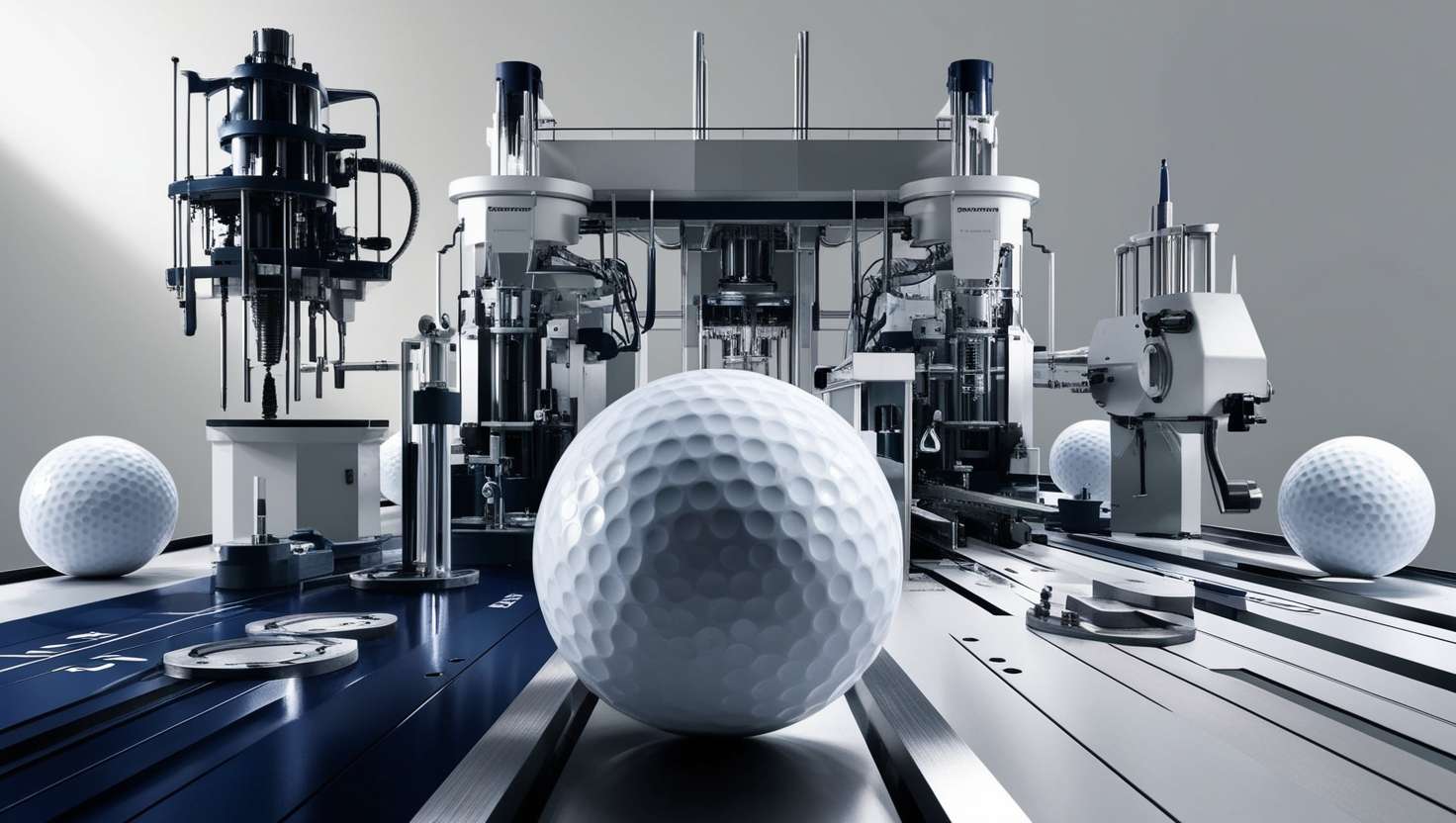
Golf is precision, skill, and strategy, and at the core of every great shot lies a tiny but critical bit of equipment: the golf ball. Seemingly simple in nature, the production of a golf ball is a delicate intermingling of science, engineering, and craftsmanship.
Before discussing the manufacturing process, it is worth knowing how golf balls have changed over the years. The earliest golf balls were known as "featheries" and date back to the 17th century. These balls were made of leather stuffed with feathers. They were costly and handcrafted, so only a few people could afford them. The "guttie" ball appeared by the mid-19th century, made from dried sap of the Gutta-percha tree. It was stronger and cheaper than the feathery, revolutionizing the game.
In the early 20th century, the rubber-core golf ball was introduced, giving rise to the modern multi-layered designs we see today. Advances in material science have allowed the development of balls that optimize distance, spin, and feel for any playing style.
Before the actual manufacturing process begins, golf ball designers determine the specifications of the ball, such as compression, dimples, layers, and core construction. Different types of balls cater to different players:
● Two-piece balls: For beginners and occasional golfers, it provides the maximum distance and durability.
● Multi-layer balls: These are used by professionals and advanced players to provide better spin control and feel.
Materials used in golf balls are mostly:
● Polybutadiene: A synthetic rubber used for the core.
● Surlyn and Urethane: Materials used for the cover, with urethane providing more spin control.
Additional resins and polymers: Used to enhance specific performance attributes.
The core is actually the engine of a golf ball responsible for the transmission of energy and compression. Most golf balls have a rubber core, but the composition varies depending on the ball's intended performance.
● A mixture of synthetic rubber and additives (such as zinc oxide and peroxide) is blended and heated.
● The mixture is then molded into spherical cores through compression or injection molding.
● These cores are cooled and inspected to ensure consistency in weight, size, and resilience.
The compression of the core would affect how it reacts to being hit:
● Low-compression cores (soft feel): Suitable for players with slower swing speeds, providing more distance and feel.
● High-compression cores (firm feel): Designed for faster swing speeds, allowing better control and workability.
For multi-layer golf balls, additional layers are added to control spin and ball flight. These layers are made from ionomer, rubber, or other synthetic materials.
● Intermediate layers: Assist in energy transfer and spin control.
● Mantle layers: Provide a balance between distance and control.
● The core is molded into each layer so that the force is evenly distributed and consistent.
The outer cover plays a crucial role in how the ball reacts upon impact with the club. There are two primary types of covers:
● Surlyn covers: More durable, providing lower spin and greater distance. Preferred by amateur golfers.
● Urethane covers: Softer and offer more spin than prior options, which means better control around the greens. Used by pros and high-end players.
The process of applying the cover involves:
● Injection or compression molding, where the cover material is wrapped around the core and cured.
● Trimming and smoothing to remove any excess material.
The most striking feature of golf balls is their dimples. A standard golf ball has between 300 to 500 dimples, each carefully designed to optimize performance.
● The dimple pattern is applied to the ball using precision molds.
● The depth, shape, and arrangement of dimples are determined based on aerodynamic research to maximize distance and stability.
Once the cover and dimples are in place, the golf ball is painted with multiple layers of protective coating to enhance durability and aesthetics. The process includes:
● Apply a white or colored base coat. Some balls have yellow, orange, or pink finishes for better visibility.
● Addition of the manufacturer's logo and alignment aids through a process of stamping or pad printing.
● A final coat is applied which will provide strength and UV resistance.
Before golf balls are packaged and sold, they undergo strict quality control measures, including:
● Weight and size verification: They should not exceed the restrictions imposed by the governing bodies, such as USGA and R&A.
● Compression testing: Checking the core’s energy transfer and resilience.
● Aerodynamic testing: Analyzing ball flight characteristics in wind tunnels and real-world conditions.
● Durability tests: Simulating repeated impacts with high-speed machines to ensure longevity.
● Only the golf balls that pass these severe tests are licensed for distribution.
After the quality check, golf balls are packaged in threes, which usually are sold in packs of twelve. These golf balls are shipped to retail outlets for golfing, pro shops, and online stores so that golfers can buy them.
Golf balls may look simple, but they are the result of complicated engineering and precise craftsmanship. From the core formulation to the precision of the dimple pattern, each stage of manufacturing has a say in how it performs on the course. The next time you tee up, take a minute to appreciate the sophisticated technology behind that small but very powerful sphere. Whether you're aiming for long-distance drives or delicate chip shots, your right golf ball can make all the difference in your game.